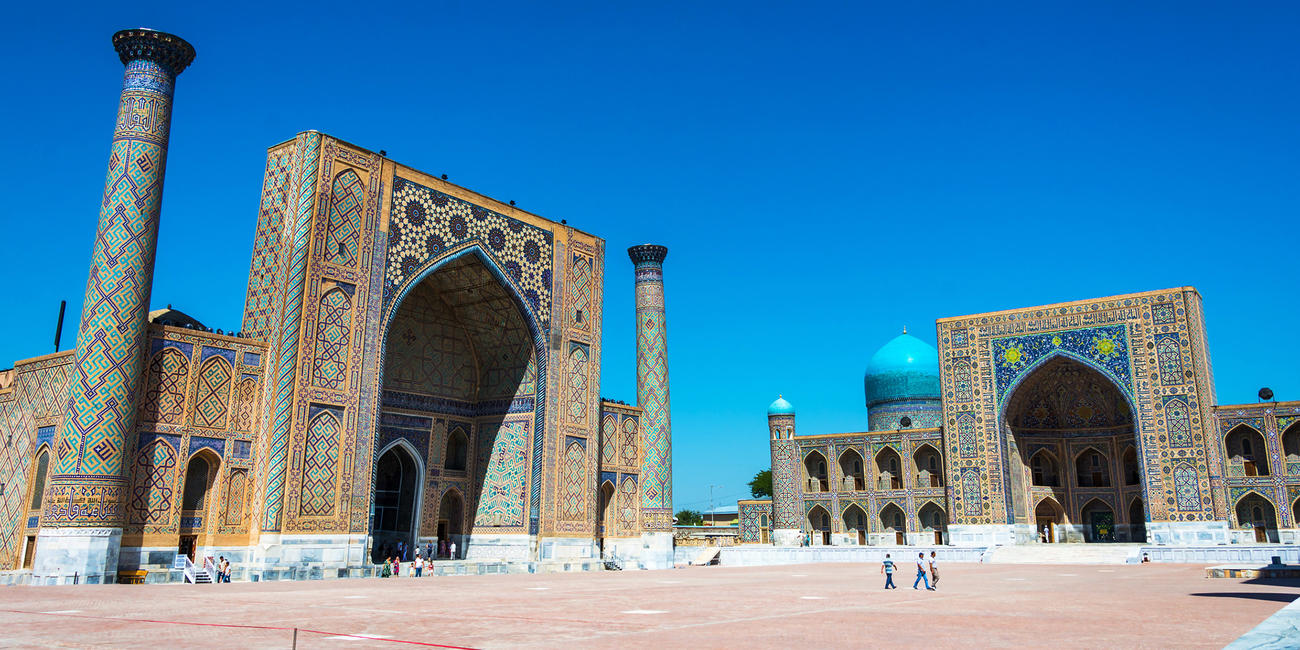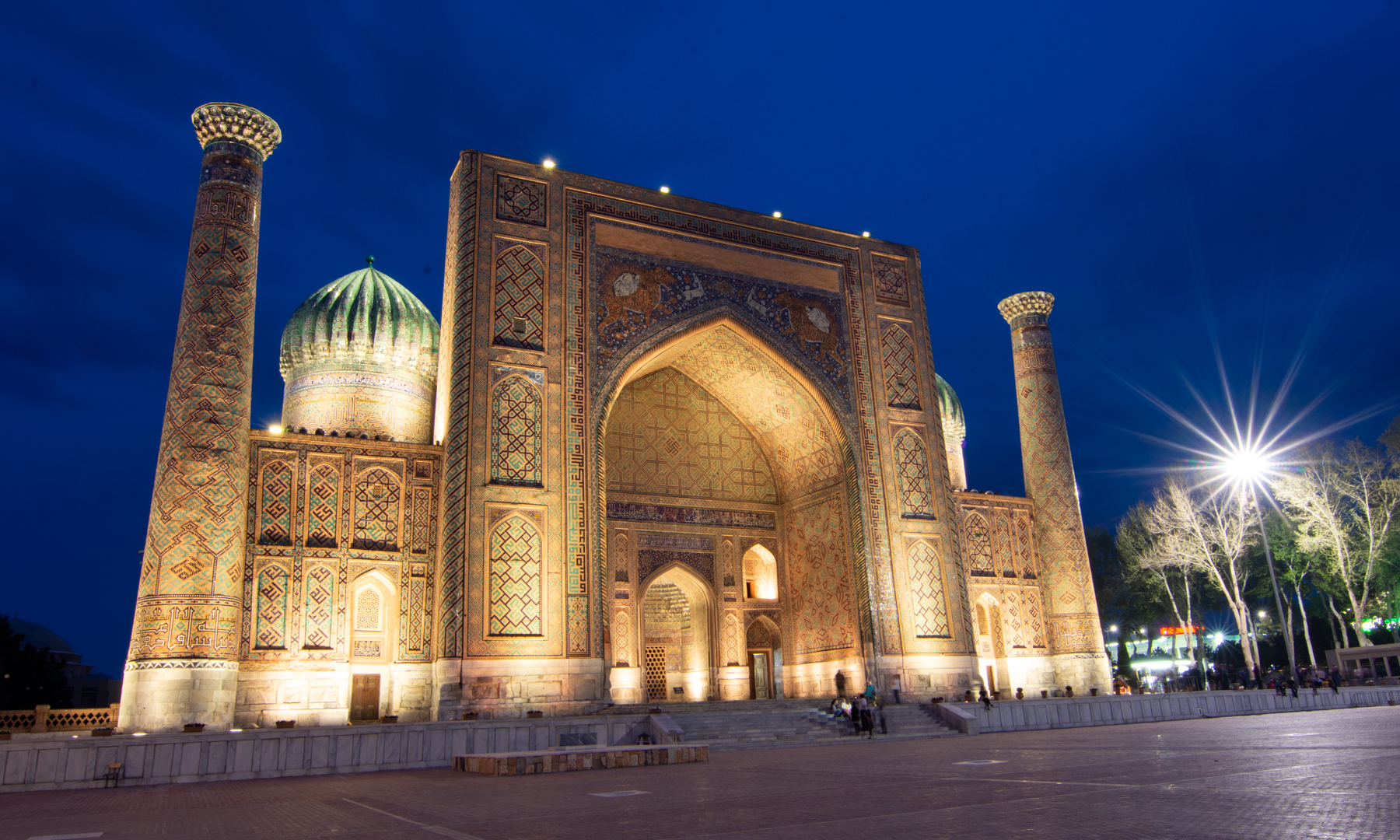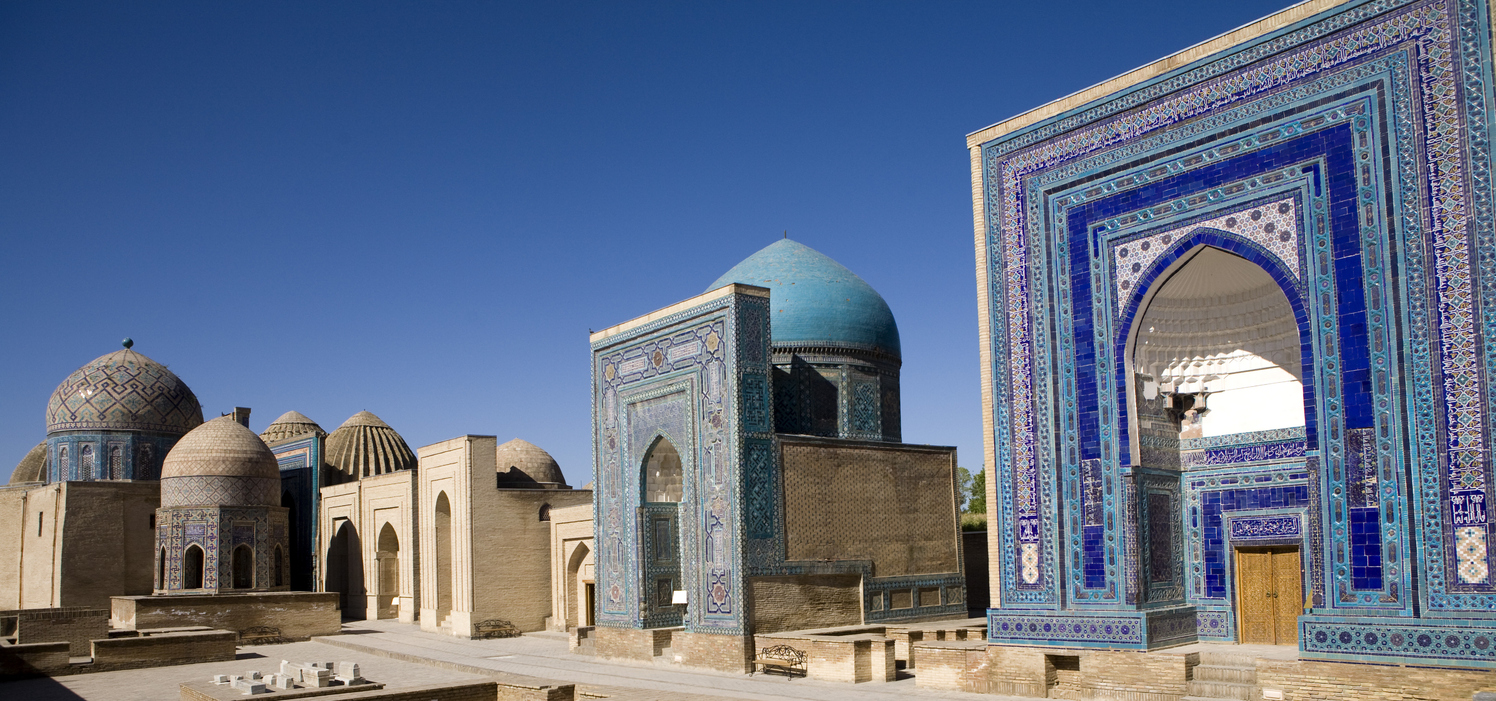
Uzbekistan, a landlocked nation nestled in the heart of Central Asia, is a treasure trove of ancient cities, vibrant culture, and breathtaking architecture. For centuries, it served as a vital crossroads on the legendary Silk Road, a conduit for trade, ideas, and empires. Today, Uzbekistan beckons travelers with its mesmerizing mosques, bustling bazaars, and warm hospitality, offering a unique and unforgettable travel experience.
This comprehensive guide will delve into the best attractions Uzbekistan has to offer, providing essential information to help you plan your journey and unlock the magic of this captivating destination.
A Journey Through Time: Unveiling Uzbekistan’s Top Attractions

Related Articles about Unveiling the Silk Road’s Jewel: A Comprehensive Guide to Uzbekistan:
- Surabaya: Unveiling the "City of Heroes" and its Finest Hotels
- Unveiling the Rainbow Nation: A Comprehensive Guide to South Africa
- Jordan: Where Ancient Sands Whisper Tales of Empires and Wonders
- Sweden: A Nordic Tapestry of Enchanting Attractions
- Lisbon: A Symphony of Sunlight, History, and Charm
Uzbekistan’s historical significance is etched into its cities, each a testament to the empires that shaped the region. Here are some of the must-see attractions:
1. Samarkand: The Jewel of the Silk Road
Samarkand, a UNESCO World Heritage site, is perhaps the most iconic city in Uzbekistan. Its legacy is inextricably linked to the Timurid Empire, whose grandeur is still palpable today.
- Registan Square: The heart of Samarkand, Registan Square is a breathtaking ensemble of three stunning madrassahs (Islamic schools): Ulugh Beg Madrassah, Sher-Dor Madrassah, and Tilla-Kori Madrassah. Their intricate tilework, soaring minarets, and imposing facades are a testament to the Timurid architectural genius. Witnessing the light and sound show projected onto the madrassahs at night is an unforgettable experience.
- Gur-e-Amir Mausoleum: This magnificent mausoleum is the final resting place of Timur (Tamerlane) and his descendants. The iconic turquoise dome and elaborate interior decorations, including a massive jade sarcophagus, are a true spectacle.
- Shah-i-Zinda Necropolis: This ancient necropolis is a street of mausoleums, each adorned with intricate tilework and unique architectural styles. It showcases the evolution of architectural design over centuries.
- Bibi-Khanym Mosque: Once one of the largest mosques in the world, the Bibi-Khanym Mosque, built by Timur for his wife, is a testament to the ambition of the Timurid rulers. Though partially ruined, its scale and remaining grandeur are awe-inspiring.
- Samarkand Silk Carpet Factory: Witness the intricate process of silk carpet weaving, from raw silk to the finished product. Learn about the techniques passed down through generations and browse the exquisite carpets on display.

2. Bukhara: The Living Museum
Bukhara, another UNESCO World Heritage site, is a city that seems to have frozen in time. Its narrow, winding streets, ancient bazaars, and well-preserved historical sites create an immersive experience.
- Poi Kalyan Complex: This complex is the spiritual heart of Bukhara and includes the Kalyan Minaret, a towering brick minaret that served as a beacon for caravans and a call to prayer. The Kalyan Mosque, with its vast courtyard and intricate details, is another architectural marvel.
- Lyab-i Hauz Complex: This tranquil square, centered around a large pool (hauz), is surrounded by madrassahs, a caravanserai, and teahouses. It’s a perfect place to relax, soak in the atmosphere, and enjoy a cup of traditional tea.
- Chor Minor Madrasah: This unique madrassah, with its four minarets, is a striking example of 19th-century architecture.
- Samani Mausoleum: One of the oldest monuments in Bukhara, this mausoleum showcases the exquisite brickwork and intricate geometric patterns of the Samanid dynasty.
- Ark Fortress: This ancient fortress, dating back to the 5th century, offers panoramic views of the city and houses a museum showcasing Bukhara’s rich history.
3. Khiva: An Open-Air Museum
Khiva, another UNESCO World Heritage site, is a beautifully preserved walled city, or Ichan Kala, that transports you back in time.
- Ichan Kala: The entire walled city of Ichan Kala is a living museum. Explore its narrow streets, admire the traditional houses, and marvel at the numerous historical monuments within its walls.
- Kalta Minor Minaret: This unfinished minaret, with its distinctive turquoise tilework, is a symbol of Khiva.
- Kunya-Ark Fortress: This fortress, with its impressive walls, houses a mosque, a mint, and a former prison.
- Islam Khodja Minaret and Madrassah: This slender minaret offers panoramic views of Khiva. The madrassah next to it is a beautiful example of Khorezm architecture.
- Tosh-Hovli Palace: This palace, with its stunning courtyard and intricate carvings, provides insight into the opulent lives of the Khiva khans.
4. Tashkent: The Modern Capital
Tashkent, the capital of Uzbekistan, offers a blend of modern architecture and historical landmarks.
- Chorsu Bazaar: This bustling bazaar is a sensory overload, filled with colorful spices, fresh produce, and traditional handicrafts.
- Hast Imam Complex: This religious complex houses the Tilya Sheikh Mosque, the Muyi Muborak Madrassah, and the Osman Quran, one of the oldest written Qurans in the world.
- Tashkent Metro: Known for its ornate and beautifully decorated stations, the Tashkent Metro is a sight in itself.
- Amir Timur Square: This central square, with its statue of Amir Timur, is a popular gathering place.
- Museum of Applied Arts: This museum showcases a vast collection of traditional Uzbek crafts, including ceramics, textiles, and jewelry.
5. Other Notable Attractions:
- Shakhrisabz: This UNESCO World Heritage site, the birthplace of Timur, features the Ak-Saray Palace ruins and other historical monuments.
- Fergana Valley: This fertile valley is known for its traditional crafts, including silk weaving and ceramics. Visit the Rishton Ceramics Workshop to witness the creation of beautiful ceramics.
- Chimgan Mountains: Located near Tashkent, the Chimgan Mountains offer opportunities for hiking, skiing, and enjoying the natural beauty of Uzbekistan.
A Glimpse into the Past: History of Uzbekistan
Uzbekistan’s history is a rich tapestry woven with threads of empires, trade, and cultural exchange.
- Ancient Civilizations: The region was home to ancient civilizations, including the Bactrians, Sogdians, and Kushans, who thrived along the Silk Road.
- Alexander the Great: Alexander the Great conquered the region in the 4th century BC, establishing Greek influence.
- The Silk Road Era: Uzbekistan flourished as a vital trading hub along the Silk Road, connecting the East and West. Cities like Samarkand and Bukhara became centers of commerce, culture, and learning.
- The Arab Conquest: In the 8th century, the Arabs brought Islam to the region, which profoundly influenced its culture and architecture.
- The Samanid and Karahanid Dynasties: These dynasties fostered a golden age of art, science, and literature.
- The Mongol Invasion: Genghis Khan and his Mongol armies swept through the region in the 13th century, devastating cities and disrupting trade.
- The Timurid Empire: Timur (Tamerlane), a descendant of Genghis Khan, established a powerful empire in the 14th century, centered in Samarkand. He was a brilliant military leader and a patron of the arts, leaving behind a legacy of magnificent architecture.
- The Shaybanid Dynasty and the Khanates: After the decline of the Timurid Empire, the region fragmented into various khanates, including the Khanate of Bukhara, the Khanate of Khiva, and the Khanate of Kokand.
- Russian Rule: Russia gradually expanded its influence in the 19th century, eventually conquering the region and establishing colonial rule.
- Soviet Era: Uzbekistan became a Soviet republic in 1924 and remained under Soviet rule until its independence in 1991.
- Independence: Uzbekistan declared its independence from the Soviet Union on August 31, 1991.
Essential Travel Tips for Uzbekistan
Planning a trip to Uzbekistan requires some preparation. Here are some essential travel tips:
- Visa: Most nationalities require a visa to enter Uzbekistan. Check the latest visa requirements for your nationality before you travel. E-visas are available for many nationalities, making the process easier.
- Currency: The official currency is the Uzbek Som (UZS). US dollars and Euros are widely accepted for exchanging. ATMs are available in major cities, but it’s advisable to carry cash, especially in smaller towns.
- Language: Uzbek is the official language. Russian is also widely spoken, particularly in urban areas. Learning a few basic Uzbek phrases will be appreciated.
- Dress Code: Dress modestly, especially when visiting religious sites. Cover your shoulders and knees.
- Bargaining: Bargaining is expected in bazaars and markets.
- Photography: Ask for permission before taking photos of people. Photography is restricted in some areas, such as metro stations and government buildings.
- Respect Local Customs: Be mindful of local customs and traditions. Show respect for religious practices and avoid public displays of affection.
- Health: Consult your doctor about necessary vaccinations and malaria prevention. Drink bottled water and be cautious about food hygiene.
- Connectivity: Wi-Fi is available in hotels, restaurants, and cafes in major cities. Purchasing a local SIM card is a good idea for data and local calls.
- Safety: Uzbekistan is generally a safe country for tourists. However, be aware of your surroundings and take precautions against petty theft.
- Book Accommodation in Advance: Especially during peak season, it’s advisable to book your accommodation in advance, especially in popular tourist destinations.
Finding Your Perfect Stay: Accommodation Options
Uzbekistan offers a range of accommodation options to suit different budgets and preferences:
- Hotels: International chain hotels, as well as locally owned hotels, are available in major cities.
- Guesthouses: Guesthouses provide a more intimate and authentic experience, often run by local families.
- Boutique Hotels: Boutique hotels offer unique and stylish accommodation, often located in historical buildings.
- Homestays: Staying in a homestay allows you to experience local hospitality and culture firsthand.
- Yurt Camps: For a unique experience, consider staying in a yurt camp in the Kyzylkum Desert.
Getting Around: Transportation in Uzbekistan
Uzbekistan offers various transportation options:
- Flights: Domestic flights connect Tashkent, Samarkand, Bukhara, and Urgench (for Khiva).
- High-Speed Trains: The high-speed Afrosiyob train is a comfortable and efficient way to travel between Tashkent, Samarkand, and Bukhara.
- Trains: Regular trains are available for slower travel between cities.
- Marshrutkas (Minibuses): Marshrutkas are a popular and affordable way to travel between cities and towns.
- Taxis: Taxis are readily available in cities. Agree on the fare before starting the journey.
- Car Rental: Car rental is an option, but roads can be challenging, and driving in Uzbekistan requires experience.
Best Time to Visit Uzbekistan
The best time to visit Uzbekistan is during the shoulder seasons:
- Spring (April-May): The weather is pleasant, with blooming flowers and comfortable temperatures. This is an ideal time for exploring the country.
- Autumn (September-October): The weather is warm and sunny, with fewer crowds than in the summer.
- Summer (June-August): The weather can be extremely hot, especially in the desert regions. However, it’s also the peak season, with more events and activities.
- Winter (November-March): The weather can be cold, with snow in some regions. However, it’s a good time to visit for those who enjoy cooler temperatures and fewer crowds.
Conclusion: Embark on Your Uzbek Adventure
Uzbekistan is a destination that will captivate your senses and leave you with lasting memories. From the magnificent architecture of Samarkand to the vibrant bazaars of Tashkent, the country offers a wealth of experiences. By utilizing the information in this guide, you can confidently plan your trip and immerse yourself in the rich history, culture, and beauty of this Central Asian gem. Embrace the journey, savor the flavors, and prepare to be enchanted by the magic of Uzbekistan.





